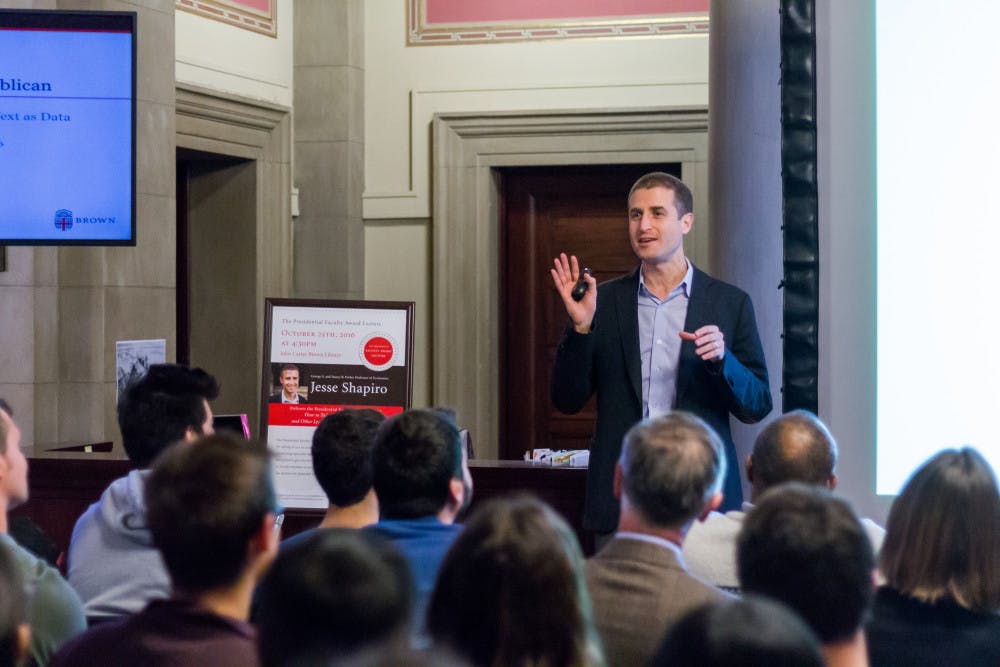Professor of Economics and recipient of the fall 2016 Presidential Faculty Award Jesse Shapiro delivered the Presidential Faculty Lecture titled “How to Talk like a Republican, and Other Lessons from Using Text as Data” at the John Carter Brown Library Tuesday night.
Shapiro walked the audience through his recent research on increasing polarization in political speeches. He and his coauthors — Matthew Gentzkow, professor of economics at Stanford University, and Matt Taddy, professor of econometrics and statistics at the University of Chicago — asked the question “has political speech become more partisan?” to guide their research, Shapiro said.
The Presidential Faculty Award is meant to highlight “especially important and innovative” scholarship, said President Christina Paxson P’19. Given the “extraordinary public discourse — … if you call it discourse” — of this election cycle, this is a “timely talk,” she added.
To answer their question, the authors used an “urn model” to separate different phrases into “Democratic speak” and “Republican speak,” Shapiro said. For example, “estate tax” and “undocumented worker” are Democratic phrases placed into one urn whereas “death tax” and “illegal alien” are Republican phrases placed into a separate urn.
To identify and sort these partisan phrases, Shapiro used speeches from the Congressional Record from 1873 to 2009, which constitutes a “verbatim record of the congressional floors,” Shapiro said. “We used text as data.”
These distinctly partisan phrases have a profound effect on public opinion, Shapiro said. In one instance, Republican pollster Frank Luntz told Republican candidates in 2004 to advocate for social security reform using the phrase “personal retirement account” — which was favorable to two-thirds of Americans — instead of “private retirement account” — which was favorable to one-third of Americans — Shapiro said. Thus, Republican candidates used “personal retirement account” 184 times and “private retirement account” 48 times.
After using technology to quantitatively evaluate the words, the group of economists found that speech became partisan — identifiable as either Republican or Democratic — in the mid-1990s and has become “sharply and consistently” partisan since, Shapiro said.
The rise in partisanship can be attributed to the Republicans’ 1994 campaigning document “Contract with America,” which unified the language of local and federal politicians based on extensive public opinion polling, Shapiro said. At the time, Republican politicians were groomed to use “consistent messaging” in an effort take retake control of Congress, he added. Since then, both parties have adopted this methodology.
This partisan language “diffuses to the broader public” and “affects group identity” because it is harder to connect with groups who use different language, Shapiro said.
After the talk, one audience member asked if Republican presidential candidate Donald Trump fits into a particular urn. The research does not capture the intricacies of a certain speaker but analyzes many speakers from a defined group, Shapiro said.
Another audience member asked if regional dialects have any effect on messaging. Though the model combines the words of many speakers and regions, further stratification is not currently possible, Shapiro said. “It is on my to-do list.”
In the last decade, different data sets have become available through enhanced technology — such as evaluating text quantitatively — which puts Shapiro “at the center” of the new research methods, said David Weil, professor of economics.





